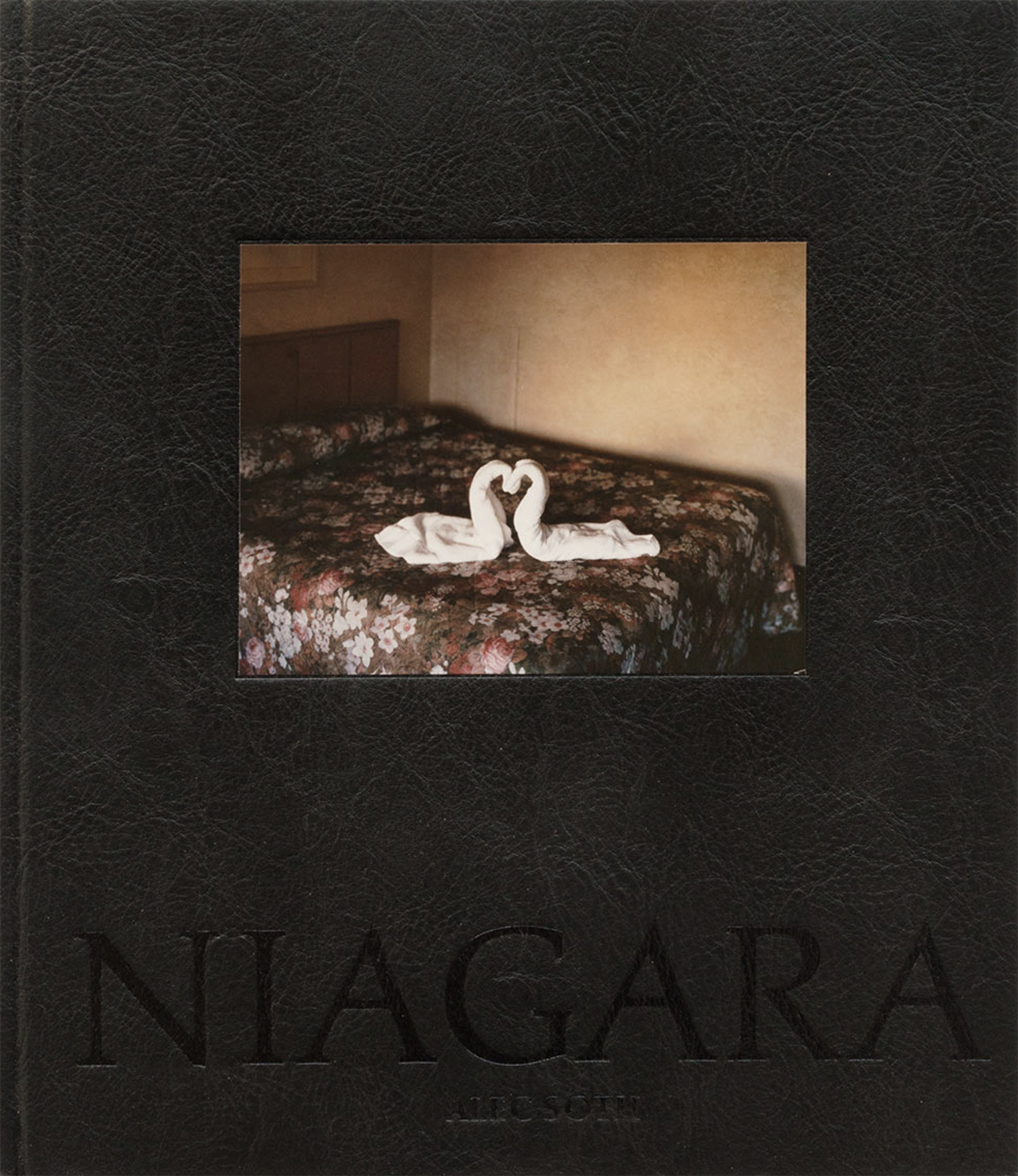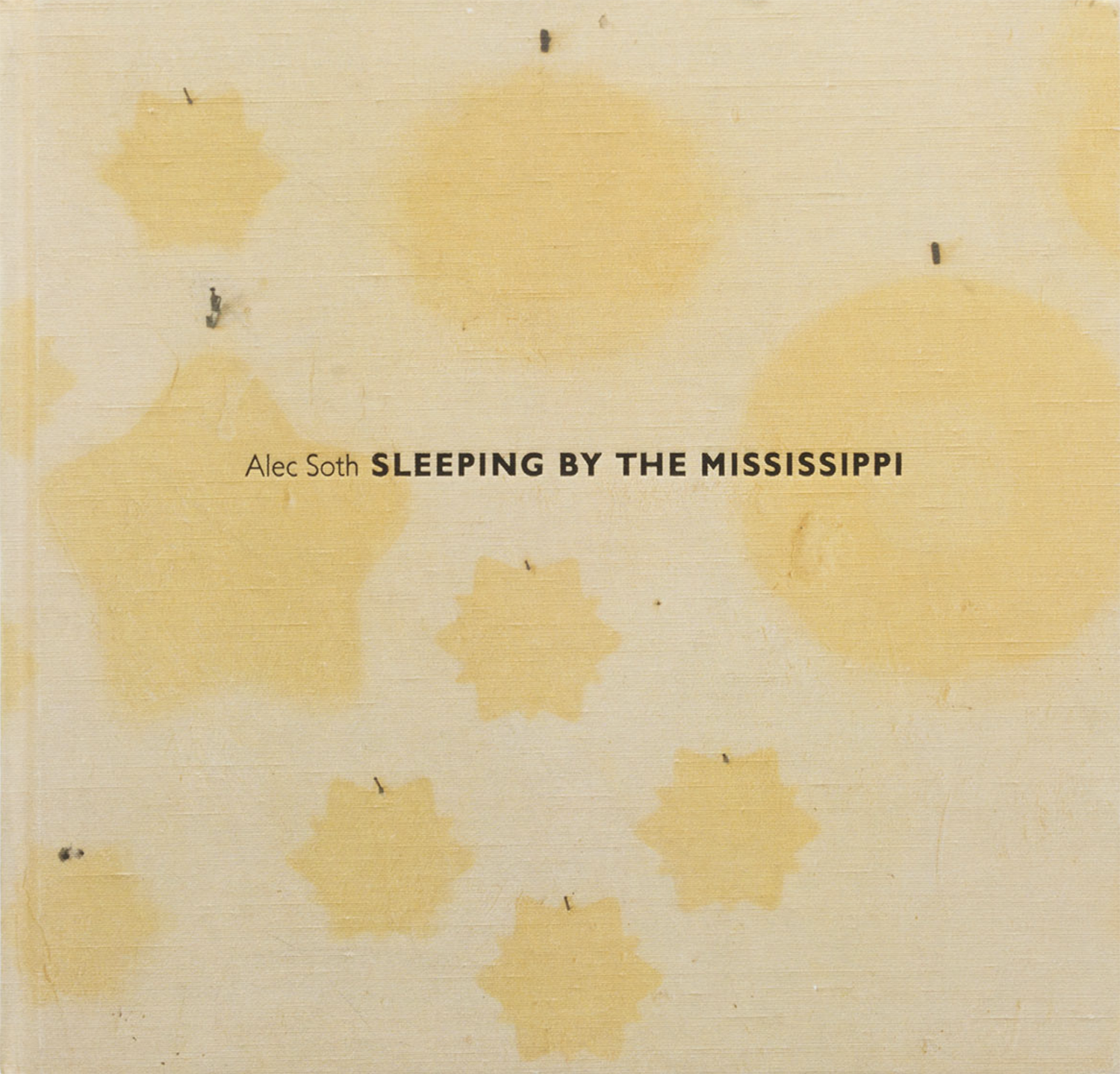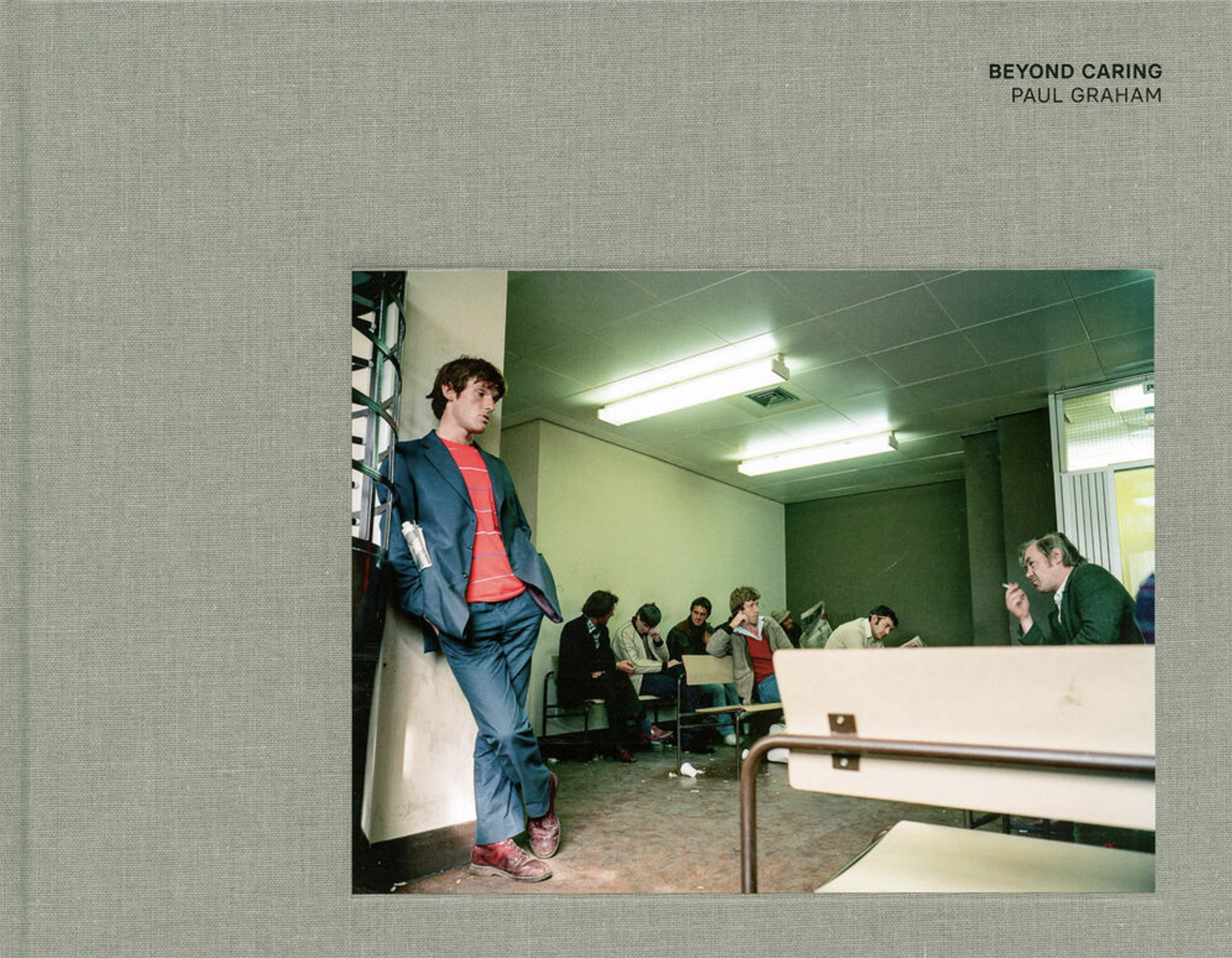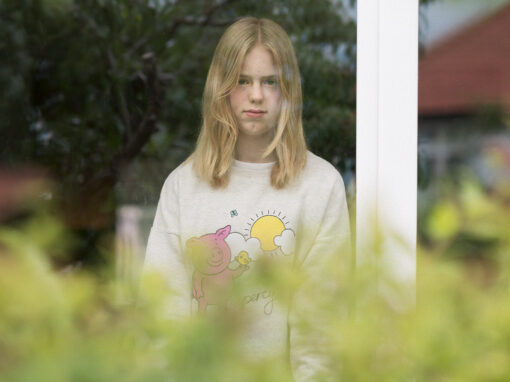May, my wife, has this look she gives me that says, “Are you really going to do that?” We have been together for almost fifteen years now and, if I am honest, I see that look often. If I continue to be honest, I generally deserve it. I suppose it appears most of all when I decide that it is a good idea to open another bottle of wine. The other occasion when the expression sees the most frequent light of day is when I decide to order yet another photobook.
The routine is always the same. The work of an artist catches my eye. I call her over and ask her what she thinks. I wait for an approving nod, expression, or comment before asking, “Can we get their photobook with a limited-edition print?”
Her follow up question is always a slightly resigned, “How much?”
“Two hundred dollars,” I reply.
And then the look appears.
To be fair, this slightly repetitive and comedic routine does make sure I consider the purchase of the book fully before parting with the cash. Without it, our collection of photobooks would probably be three times larger than it already is. Mind you, the collection is already rather large and is cross-continental. There is a bookcase full at my parents’ home in England as well as a couple of large boxes that my sister-in-law kindly stores in her basement here in Toronto. The bulk of the collection is on our bookshelves though, and it is something that I take great delight in.
What I want to talk about in this article is where I think photobooks make their strongest contribution to the art world. It is not in “best of” collections, but in the books that are about something: the ones that tell a story. The photographs that fill books like Steve McCurry’s The Iconic Photographs or Ernst Haas’s New York in Colour 1952-1962 are undoubtedly beautifully shot (whatever one feels about the issues of representation in McCurry’s work), but I do not feel the same way about them as I do about Alec Soth’s Sleeping by the Mississippi, Paul Graham’s A Shimmer of Possibility, Stephen Shore’s Uncommon Places, Robert Frank’s The Americans, or Robert Polidori’s Zones of Exclusion: Pripyat and Chernobyl. These books, along with others, are riveting. I find myself going back to them time and time again. I am always looking to unlock another of the seemingly endless troves of secrets that they hold.
Sleeping by the Mississippi is a work that has profoundly affected my own creative practice. I began a Master’s degree in photography in mid-2019 and completed it successfully in April this year. The course required me to produce a significant body of narrative and meaning-driven photography. This was not something that I had really contemplated before and seemed an immense challenge. As I embarked on my own photographic journey, I thought it best to try and understand how the finest photographers approach these sorts of problems.
I started by buying Soth’s Niagara (1). It is an excellent work. There are probably a few too many photographs of male genitalia in it for my taste but it is still an impressive portrait of the falls and its people. Soth himself described the work as his “penis project” to give the unfamiliar a sense of the amount of John Thomas-driven imagery the book contains. This led me to his earlier work: Sleeping by the Mississippi (2).


Getting hold of a copy of the book was a nightmare. Unbeknownst to me, the most recent print run had sold out. I ordered it from our local book chain, and it took months to arrive. When it did land on our doorstep, it became apparent that the supplier had needed to source the book from an obscure store somewhere in a rural part of the USA. Reflecting on the book’s content, this now seems rather appropriate.
The book contains a series of large format images that Soth collected during his journeys along the Mississippi River. Beyond a slight overemphasis on the “sleeping” part of the title, there are too many images of beds, the book is a masterpiece. It contains an eclectic cast of characters that leave me wondering about their fates: the sinister Joshua whose collar declares him a “preacher man” but whose facial tattoo marks him as a killer; the bereaved Lenny who wants to “live to 100 and look the way I do now”; Sheila who wears her Christian fundamentalism as a badge of pride, or Charles who wants to take flight and dreams of possibilities. Soth makes me want to know every one of their stories.
It is packed with non-linear narratives. Topics are visited and revisited throughout the work. In its closing essay, Annes Wilkes Tucker notes that, “Soth alludes to illness, procreation, race, crime, learning, art, music, death, religion, redemption, politics, and cheap sex.” It deals with these topics with aplomb. There is no doubt that this brilliant work inspired me throughout my studies and helped me to develop new directions in my own work. It is a book that makes me dream.
Paul Graham’s A Shimmer of Possibilities is a very different work to Sleeping by the Mississippi but is no less impressive or profound in its impact. Graham, arguably the UK’s most renowned contemporary photographer, has a string of powerful essays to his name. His book Beyond Caring (3), recently republished by MACK, is a damning indictment of the devastation the policies of Margaret Thatcher’s Conservative Government left on Britain’s social fabric.

However, it is for A Shimmer of Possibility (4), part of his American Trilogy, that Graham is probably best known, and it is a work that is almost impossible to pin down. As well as images that stand alone and non-linear narratives, it contains linear stories. The most notable of these is a series of photographs of a man mowing a lawn at sunset who is interrupted by a shower. Another features a woman eating fast food and smoking a cigarette, and another a couple walking home carrying a case of soft drinks. The photographs could not be more mundane. Yet they are also full of questions and the possibilities of the title. They are also quite beautiful. My favourite from the book is an image of what appears to be red glacé cherries spilt onto the footpath. The cherries glow magically in the soft light. It is a wonderous image that illustrates that if you look hard enough, perhaps Look Closer enough, you can find beauty everywhere.

The work was also original in the style of its first publication. It was published as a set of twelve volumes. One of these volumes contained sixty images, another only one. This quirky approach is entirely appropriate for this innovative project. A Shimmer of Possibility is clearly a work that is about something. I have seen it suggested that the work is about time. This is definitely true, but there is more going on in here. What that is, is a task for the viewer to contemplate. This is a contemplation that starts anew every time I reopen the book.
One fascinating exercise that I sometimes like to carry out with our collection is to compare how different artists treat similar subjects. How do they tell their stories? What message do they get across? Does one do it more effectively than the other? This can sometimes lead to surprises. One such surprise came with two books that examine another favourite indulgence of mine: coffee. If I asked you who would produce a more effective book on the lives of coffee producers and the hardships they endure, Sebastiao Salgado or Steve McCurry? I suspect that most people would answer Salgado. Yet, that would not be the case here. Salgado’s book The Scent of a Dream: Travels in the World of Coffee is, to my eye, overblown, overprocessed, and self-indulgent. It seems more like an advert for the industry than a statement about the lives of the workers. When compared to the magnificent work that he produced for books such as Gold, Genesis, and Terra, it is a disappointing offering. Perhaps this is the reason why it is the only Salgado book that I have ever picked up from a bargain book bin!
On the other hand, McCurry is often criticised for producing work that can be categorised as “poverty porn”. The critic Teju Cole went further and described McCurry’s work as “astonishingly boring” in a New York Times article. I have mixed feelings about some of McCurry’s photographs as I think that sometimes he makes human misery look beautiful, but Cole’s criticism is grotesquely unjust. In From These Hands, I think he gets things mostly right. The book is humane and humanistic, and effectively examines the challenging lives of coffee producers around the work. It might be a little sentimental, but as Sontag once pointed out, “Pathos, in the form of a narrative, does not wear out.”
The books that this article has discussed have all been about something rather than just being a collection of the artists’ best single images. To me that is the vital ingredient that makes them transcend the commonplace. I will not tire of flicking through the best work of Soth, Salgado, Graham, and so many others. They make me happy, sad, contemplative, and enraged. They make me laugh, lament, and dream. Our collection is still growing. As I write, I have received confirmation that our copy of the new book Mementos by Paola Franqui, professionally known as Monaris, is on its way. I very much look forward to seeing it and framing the print we have purchased with it. How about you? Which photobooks have had the greatest impact on you? I would love to know.
(1) Alec Soth – Niagara
(2) Alec Soth – Sleeping by the Missisipi
(3) Paul Graham – Beyond Caring
(4) Paul Graham – A Shimmer of Possibility





Terrance Wimmer
August 11, 2021 at 23:45
You just just validated my life-long weakness of not being able to walk by a bin of photo books without stopping and carefully looking through them. One such discovery that I cherish and have never read a single word about is “A Kind of Rapture” by Robert Bergman (Pantheon Books – New York). I can’t remember where I found it, but I’m sure it was tossed in a ‘Clearance” bin, or at some weekend thrift mart. It is a series of exquisite prints of lost souls that indeed captures the soul of each individual in the book. The other worldly expressions of pain and sadness transcends these souls into another place outside this world… it definitely appears that they are in a kind of rapture all their own.
Robert Wilson
August 12, 2021 at 00:41
Thank you for your thoughts Terrance!
I will definitely keep an eye out for Bergman’s book. His work looks impressive.
Thank you for the tip!
Desiree Day
August 12, 2021 at 00:43
Great read, thanks 🙏
Robert Wilson
August 13, 2021 at 03:52
My pleasure!
Chuck Cunningham
August 12, 2021 at 13:10
I have three: Immediate Family, Sally Mann, Aaron Siskind 100 and first and foremost, The Black Trilogy, Ralph Gibson.
Robert Wilson
August 13, 2021 at 03:53
Thank you for your thoughts!
Dogman
August 12, 2021 at 21:20
Unfortunately, Rob, you have named three of my LEAST favorite photographers here–Soth, Graham and McCurry. I agree with Teju Cole that McCurry’s photos are, indeed, boring and I would extend that to both Soth and Graham. But I would also add Soth’s and Graham’s photos are mostly incoherent and sterile. I like photos with a bit more soul than this. If I were to pick three photographers who provide that nurturing, I would go with John Gossage, Raymond Meeks and…well, tying for third place, a whole raft of others including those mentioned in the comments as well as the original article.
But that’s the nature of taste. It’s subjective. Or, as one of my friends always says when we disagree, that’s why there’s chocolate and vanilla.
Robert Wilson
August 13, 2021 at 03:55
To each their own!
As long as you find the work that you love, then all is good.
Rick
August 14, 2021 at 21:26
I feed my photo book addiction via AbeBooks. David Duchemin is tops on my list mostly because he explores the “why” of it all, not just blasting the reader/viewer with his photos.
Robert Wilson
August 14, 2021 at 23:02
Thank you for your thoughts Rick!
Yes, I have one of his books in the UK part of my collection.
He has some interesting and engaging ideas.
Cheers
Richard Hudson
August 15, 2021 at 20:48
I’m interested in Dogman’s affection for John Gossage, for I still have trouble appreciating his work. While the narrative effect of the entire sequence in The Pond is provocative, the images themselves still seem very random, nondescript to me. If Dogman (or anyone) can put into words what is appealing about his work, it might help me understand him better. (Full disclosure: Lik3 Rob, I greatly admire Alex Soth, especially his early work like Sleeping by the Mississippi. His environmental portraits are an inspiration.)
Whether Gossages’s work appeals to you or not, Jordan Weitzman has a wonderful interview with Gossage, on his Magic Hour podcast, about the world of art photography in the 1970’s.
Robert+Wilson
September 10, 2021 at 17:10
Thank you for your thoughts Richard!
I am happy to hear that you share my love affection for Sleeping by the Mississippi.
Jurjen
August 20, 2021 at 12:08
Nice read. There are so many stories to tell and there are so many stories to be photographed. The art of telling stories by great photographs and letting the viewer see and feel there is something going on the photograph and in the book is a real craft. I have just started buying photobooks (I am a late starter 🙂 ) My latest gain is a book called ‘Peak’ from Bastiaan Woudt. I think many more books will follow, but sometimes I don’t really know where to look or start…. 🙂
Robert+Wilson
September 10, 2021 at 17:12
Hi Jurjen,
Thank you for your thoughts!
I have found that used book shops are great for photobooks. I have found some real gems for not too much money.
Good luck with your search!